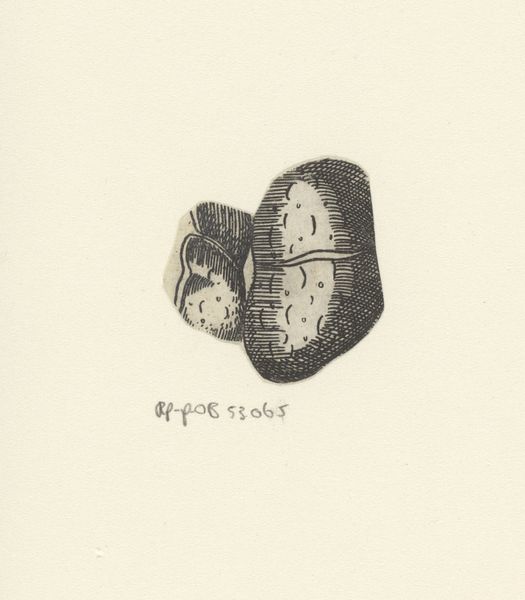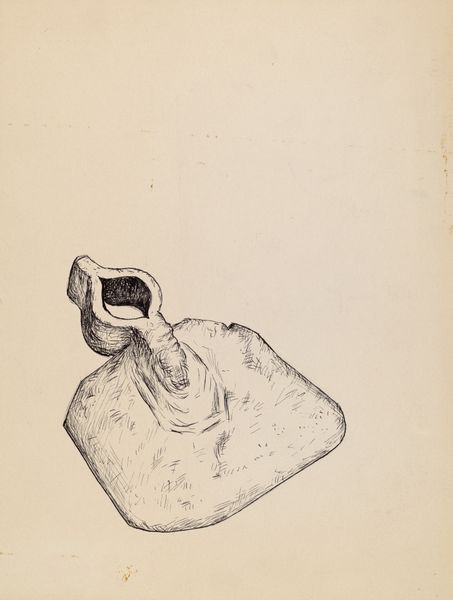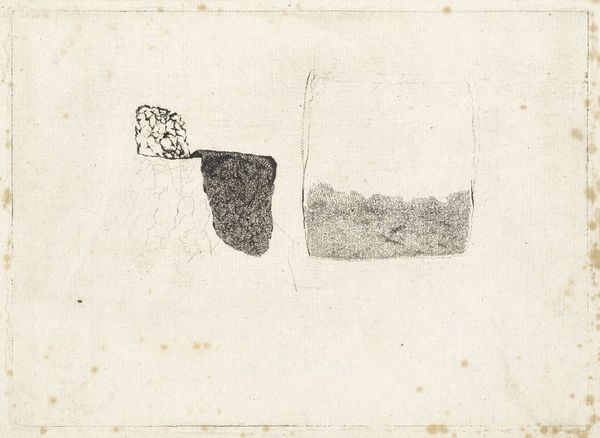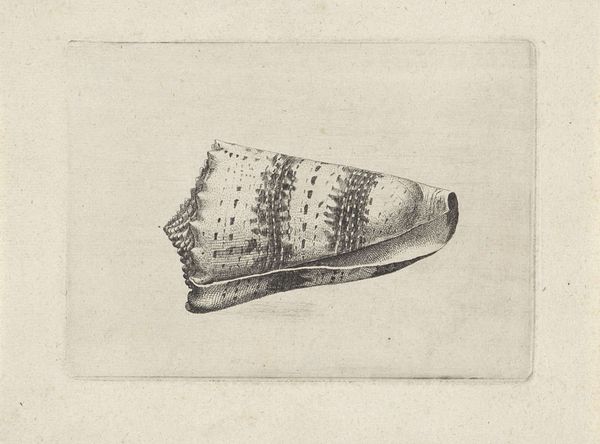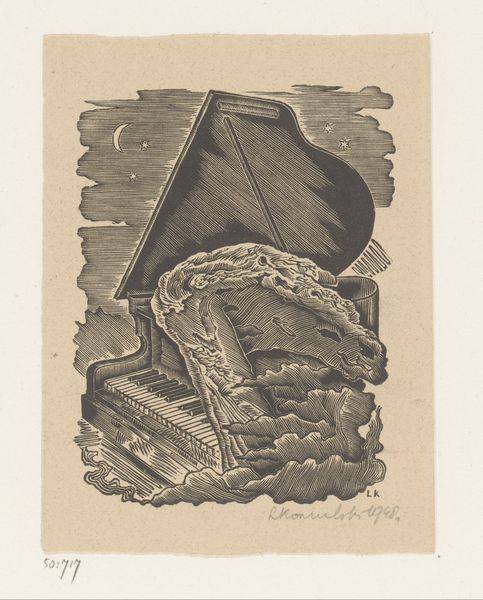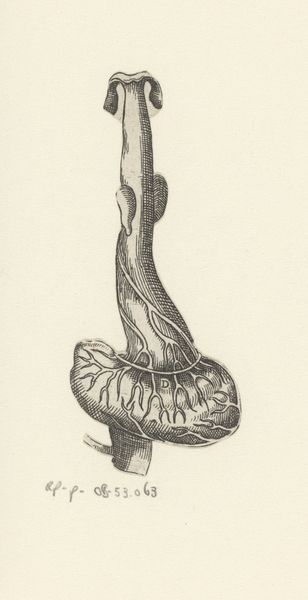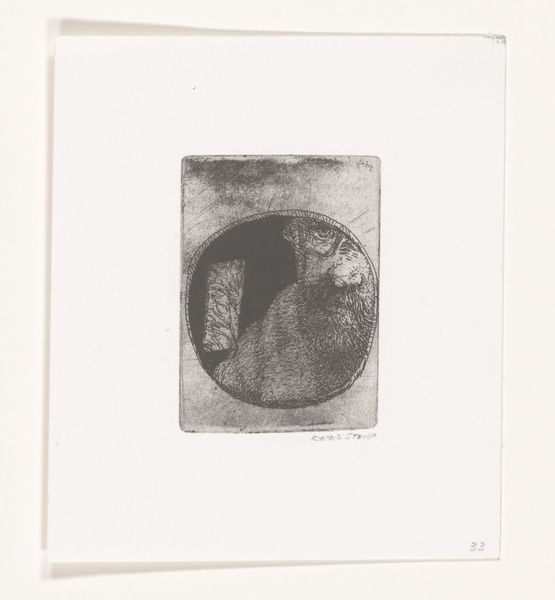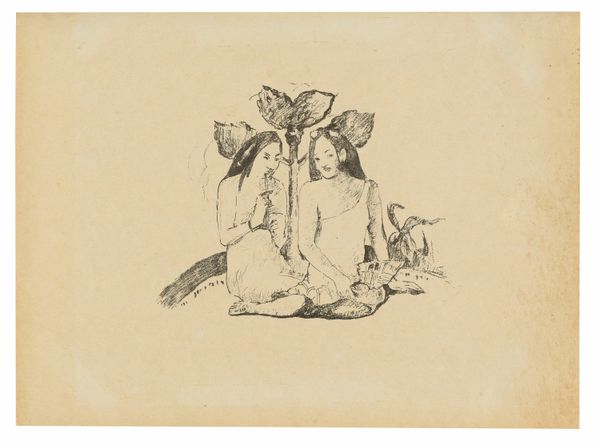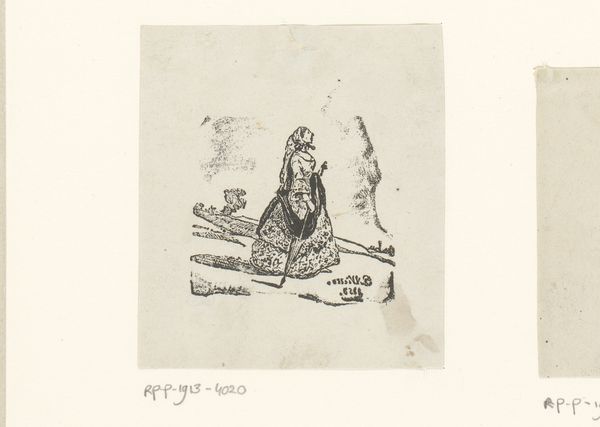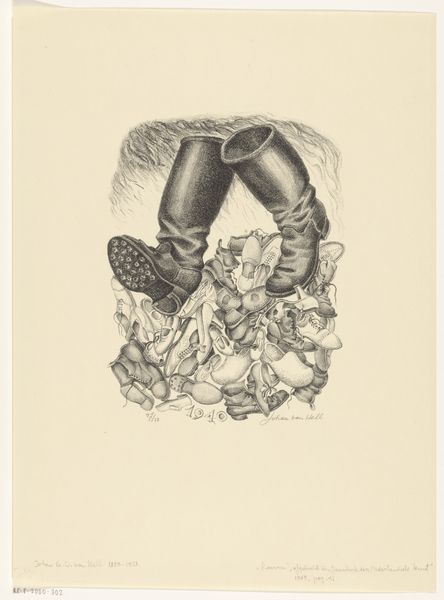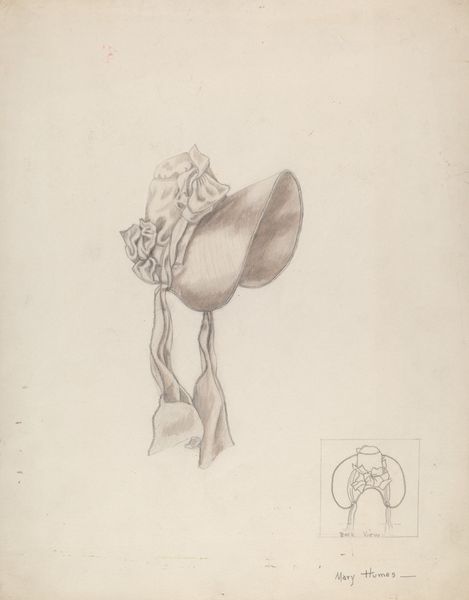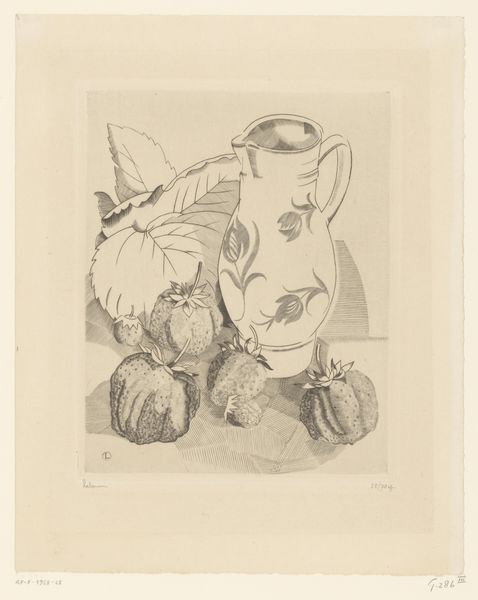
drawing, print, metal, engraving
#
drawing
#
baroque
# print
#
metal
#
engraving
Dimensions: height 41 mm, width 38 mm
Copyright: Rijks Museum: Open Domain
Lucas Kilian made this print, entitled "Nier," sometime in the late 16th or early 17th century. The kidney's inclusion in a natural history collection signifies more than just scientific curiosity; it reflects a broader cultural interest in understanding the human body and its functions, often intertwined with philosophical and religious beliefs. Made in Augsburg, Germany, this time coincided with significant religious and political upheavals, including the Reformation and the rise of scientific inquiry. The detailed rendering of the kidney could reflect the influence of the printing press on the widespread dissemination of knowledge, enabling scholars and artists to study and reproduce images of anatomical specimens. To fully appreciate the cultural significance, we might consult contemporary medical texts and natural history treatises. Ultimately, interpreting art requires considering the complex interplay between artistic conventions, scientific knowledge, and cultural values of the time.
Comments
No comments
Be the first to comment and join the conversation on the ultimate creative platform.
